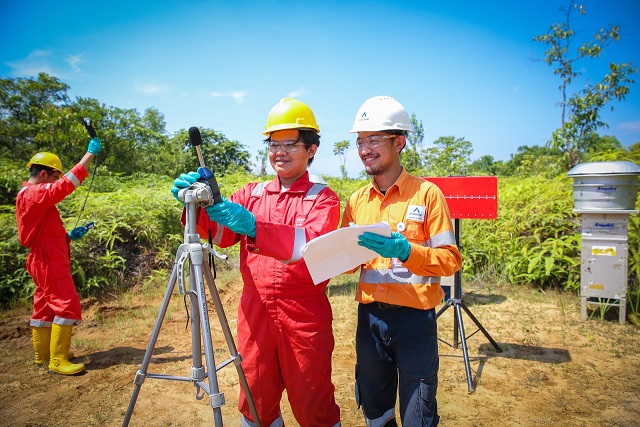Environmental Impact Assessment (EIA) is a systematic process used to evaluate the potential environmental effects of proposed development projects or policies before they are implemented. The primary goal of EIA is to ensure that decision-makers consider environmental impacts alongside economic and social factors, leading to sustainable development. This process involves identifying, predicting, and assessing potential impacts on the environment and suggesting mitigation measures to reduce negative effects.

1. History and Evolution of EIA
EIA has its roots in the United States with the enactment of the National Environmental Policy Act (NEPA) in 1969. NEPA established a framework for environmental decision-making and mandated EIA for major federal actions significantly affecting the environment. The concept quickly spread globally, with many countries adopting similar legislation and processes.
2. Key Principles of EIA
- Proactivity: EIA is conducted before the commencement of a project to prevent or mitigate adverse environmental impacts.
- Participation: Public involvement is a crucial aspect, ensuring transparency and inclusiveness in the decision-making process.
- Systematic Approach: EIA follows a structured methodology to assess environmental impacts comprehensively.
- Integration: EIA integrates environmental considerations into economic and social planning, promoting sustainable development.
- Decision Support: EIA provides essential information to decision-makers, enabling informed choices that consider environmental consequences.
3. EIA Process
The EIA process typically involves several key steps:
- Screening: Determines whether a project requires an EIA and the level of assessment needed.
- Scoping: Identifies the key environmental issues and impacts to be considered, involving stakeholder input.
- Baseline Study: Establishes the current environmental conditions to provide a benchmark for assessing impacts.
- Impact Prediction: Predicts potential environmental impacts using various analytical methods and models.
- Mitigation Measures: Proposes actions to prevent, reduce, or offset adverse environmental impacts.
- Impact Assessment: Evaluates the significance of predicted impacts and the effectiveness of mitigation measures.
- Public Consultation: Involves the public and stakeholders, gathering feedback and addressing concerns.
- Reporting: Compiles findings in an Environmental Impact Statement (EIS) or Environmental Impact Report (EIR).
- Decision-Making: Regulatory authorities review the EIS/EIR and decide whether to approve, modify, or reject the project.
- Monitoring and Compliance: Ensures that mitigation measures are implemented and environmental performance is monitored.
4. Latest Updates in EIA
- Climate Change Considerations: Modern EIA practices increasingly emphasize the need to assess projects’ contributions to climate change and their vulnerability to climate impacts. This includes evaluating greenhouse gas emissions and adaptation measures.
- Cumulative Impact Assessment: Recognizing that the combined effects of multiple projects can be significant, EIA now often includes cumulative impact assessments to understand broader environmental implications.
- Biodiversity and Ecosystem Services: Recent EIA guidelines stress the importance of protecting biodiversity and maintaining ecosystem services, ensuring projects do not lead to significant habitat loss or degradation.
- Digital Tools and Technology: Advances in technology have improved the accuracy and efficiency of EIA processes. Geographic Information Systems (GIS), remote sensing, and environmental modeling software are widely used to enhance impact prediction and visualization.
- Public Participation and Social Media: The use of social media and online platforms has increased public engagement, allowing for broader and more inclusive stakeholder participation in the EIA process.
- Sustainable Development Goals (SDGs): EIA frameworks are aligning with the United Nations SDGs, ensuring that environmental assessments contribute to global sustainability objectives.
5. Challenges in EIA
- Quality and Consistency: Ensuring high-quality EIA reports and consistent application of methodologies can be challenging, especially in regions with varying regulatory frameworks.
- Capacity Building: Developing countries often face challenges related to technical capacity, financial resources, and institutional frameworks needed to conduct effective EIA.
- Political and Economic Pressures: Balancing environmental protection with economic development can be contentious, with political and economic pressures sometimes influencing EIA outcomes.
- Follow-Up and Enforcement: Ensuring that mitigation measures are effectively implemented and monitored remains a significant challenge.
6. Global and Regional EIA Regulations
- European Union (EU): The EU has a robust EIA framework established under the EIA Directive (2011/92/EU), which requires member states to conduct EIAs for certain projects and consider transboundary impacts.
- United States: The National Environmental Policy Act (NEPA) mandates EIA for major federal actions, with Environmental Assessments (EAs) and Environmental Impact Statements (EISs) as key components.
- Canada: The Canadian Environmental Assessment Act (CEAA) outlines the federal EIA process, emphasizing sustainable development and indigenous participation.
- Australia: The Environment Protection and Biodiversity Conservation Act (EPBC Act) requires EIAs for actions likely to impact nationally significant environmental assets.
7. Future Trends in EIA
- Integration of Sustainability Assessments: Future EIAs are likely to integrate broader sustainability assessments, considering social, economic, and environmental dimensions more comprehensively.
- Adaptive Management: EIA processes are evolving to include adaptive management approaches, allowing for flexibility and responsiveness to changing environmental conditions and new information.
- Global Standards and Harmonization: Efforts to harmonize EIA standards and practices across countries and regions will continue, promoting consistency and improving environmental protection globally.
Conclusion
Environmental Impact Assessment (EIA) is a crucial tool for promoting sustainable development by ensuring that environmental considerations are integrated into decision-making processes. As EIA practices evolve to address emerging challenges and incorporate the latest scientific and technological advancements, they will continue to play a vital role in protecting the environment and enhancing the quality of life for current and future generations.



